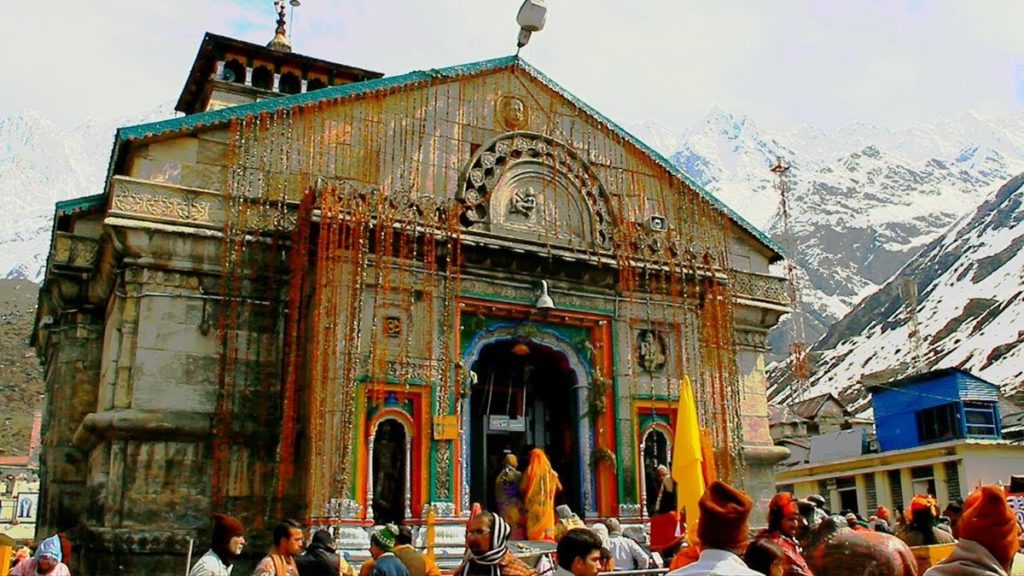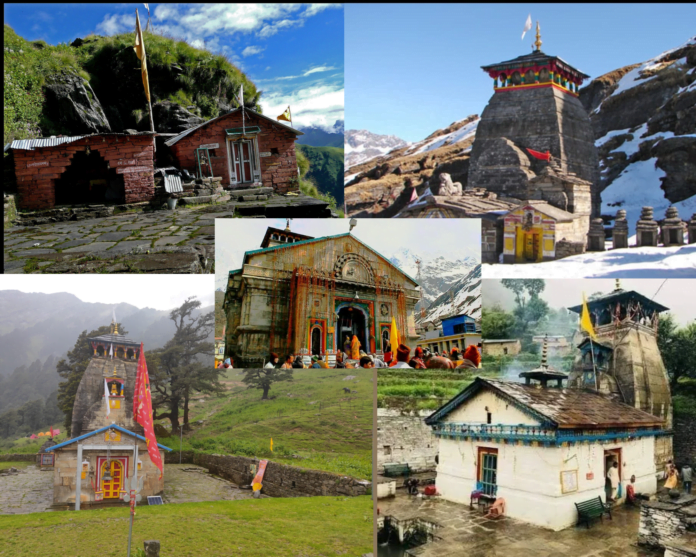Panch Kedar, meaning “Five Kedars,” refers to the five sacred temples dedicated to Lord Shiva, located in the breathtaking Himalayan region of Uttarakhand, India.
These ancient temples hold immense religious significance for Hindus and are an important pilgrimage destination for devotees seeking blessings from Lord Shiva.
As per popular belief, during one of the ages described in the ancient Hindu scriptures, the Pandava princes (characters from the Hindu epic Mahabharata) were advised to worship Lord Shiva in Uttarakhand as penance for the bloodshed caused in the war as mentioned in the epic Mahabharata.
The legend goes that Lord Shiva was hiding from the Pandavas by taking the form of a buffalo but was identified by Bhima, one of the five Pandava brothers. On being recognised, the deity disappeared and manifested himself in five different locations in the Himalayas.
It is said the each of these sites is dedicated to a part of the Lord – Kedarnath (the hump of Lord Shiva), Madhmaheshwar (His belly button), Tungnath (His arms), Rudranath (His face), Kalpeshwar (His jata or hair).
Let us delve into the spiritual journey of Panch Kedar and explore the legends and divine aura surrounding these holy shrines.
Kedarnath Temple

Kedarnath Temple, situated at an altitude of 3,583 meters (11,755 feet), is the most prominent and revered shrine among the Panch Kedar temples.
It is believed to be the location where Lord Shiva’s hump (Kedara) manifested. The temple’s awe-inspiring backdrop of snow-capped peaks and the Mandakini River flowing nearby adds to its mystique.
Pilgrims undertake a challenging trek to reach this sacred site, which symbolizes the ultimate liberation of the soul.
READ MORE : ABOUT KEDARNATH TEMPLE
Tungnath Temple
The Tungnath Temple, located at an elevation of 3,680 meters (12,073 feet), is renowned as the highest Shiva temple in the world.
According to mythology, this temple is associated with Lord Shiva’s arms (Bahu). The trek to Tungnath, amidst lush meadows and panoramic views of the Himalayan range, is a remarkable experience.
Many devotees continue their journey further to Chandrashila Peak, which offers breathtaking sunrise and sunset vistas.
READ MORE: ABOUT TUNGNATH TEMPLE
Rudranath Temple
Rudranath Temple is situated at an altitude of 2,286 meters (7,500 feet) amidst the serene Rudraganga Valley. It is believed to be the place where Lord Shiva’s face (Mukha) appeared.
The temple complex is surrounded by beautiful alpine meadows and dense forests, creating a tranquil ambiance for spiritual seekers.
The trek to Rudranath involves traversing steep trails and picturesque landscapes, making it a memorable pilgrimage.
READ MORE: RUDRANATH TEMPLE
Madhyamaheshwar Temple
Madhyamaheshwar Temple is nestled in the scenic Kedarnath Wildlife Sanctuary, at an elevation of 3,497 meters (11,473 feet).
This sacred site represents the navel (Nabhi) of Lord Shiva. The trek to Madhyamaheshwar is known for its natural beauty, including waterfalls, rhododendron forests, and breathtaking vistas of snow-clad peaks.
The temple’s peaceful surroundings offer an ideal setting for devotees to connect with their spiritual selves.
Kalpeshwar Temple
Kalpeshwar Temple, situated at an elevation of 2,134 meters (7,001 feet), is associated with Lord Shiva’s hair (Jata).
It is believed to be the most accessible among the Panch Kedar temples. The temple is nestled amidst lush green meadows and terraced fields, offering a serene atmosphere for devotees.
The divine aura of Kalpeshwar Temple attracts numerous pilgrims who seek solace and enlightenment.
Panch Kedar Map
If you like our work then please Donate to us so that we can keep posting content regularly.
Note: We don’t make any guarantees if the above-stated facts are not correct. If you think any information provided by us is wrong then contact us.
